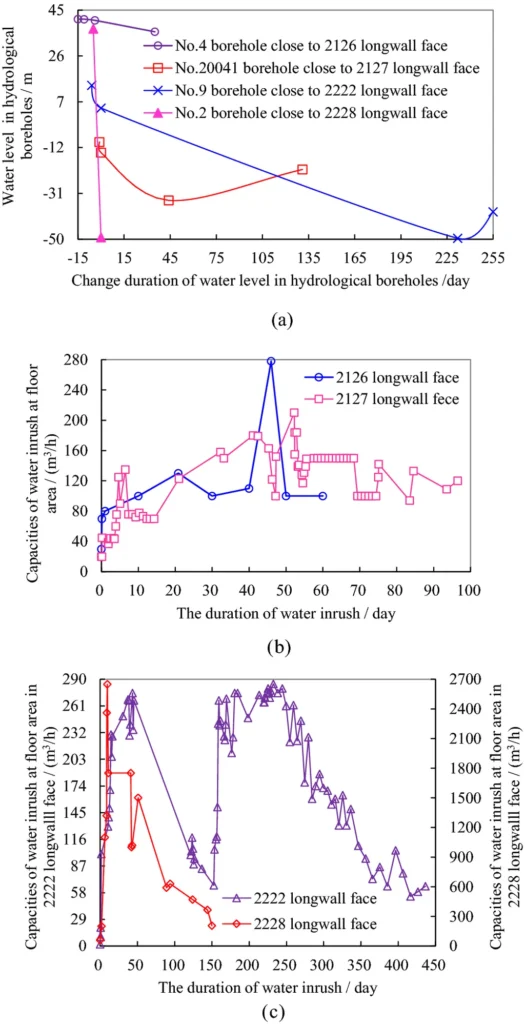In the heart of China’s Jiangxi Province, researchers are unraveling the mysteries of deep coal mining, aiming to mitigate one of the industry’s most formidable challenges: water inrush disasters. Dr. Geng Jiabo, leading a team at the Jiangxi Province Key Laboratory of Safe and Efficient Mining of Rare Metal Resources, has been delving into the intricate damage characteristics and seepage path distribution of coal under different mining methods. Their findings, recently published in the Journal of Mining Science (矿业科学学报), could significantly impact the safety and efficiency of coal mining operations worldwide.
Water inrush disasters occur when groundwater seeps into mining workfaces through fractures in the coal, a phenomenon exacerbated by the immense pressures of deep mining. “Different mining methods cause varying degrees of damage and fracture distribution in the coal, directly influencing the risk of water inrush,” explains Dr. Geng. His team’s research systematically studied three mining modes: protective layer mining (PCM), top coal mining (TCM), and pillarless mining (NM), using advanced triaxial seepage tests and high-precision 3D fracture scanning.
The results revealed that high stress loading amplitudes, particularly in pillarless mining, significantly aggravate coal deformation and increase the risk of instability. “The damage accumulation rate of TCM and NM was significantly higher than that of PCM, and the damage degree of the rupture surface became more serious,” Dr. Geng noted. The study also found that permeability increased with stress levels, with high stress promoting fracture propagation and optimizing seepage channel connectivity.
The seepage paths varied distinctly among the three mining methods, with PCM exhibiting a bifurcation tree pattern, TCM a network shape, and NM a surface shape. “The seepage effect increased sequentially from PCM to NM,” Dr. Geng observed. These findings provide a crucial reference for damage control and water inrush prevention in deep coal mining.
The commercial implications of this research are substantial. By understanding how different mining methods affect coal damage and seepage paths, mining companies can make informed decisions to enhance safety and operational efficiency. “This study offers a roadmap for optimizing mining practices to mitigate water inrush risks, ultimately safeguarding both workers and investments,” Dr. Geng said.
As the energy sector continues to evolve, the insights from Dr. Geng’s research could shape future developments in mining technologies and strategies. By addressing the root causes of water inrush disasters, the industry can move towards safer, more sustainable, and economically viable coal mining practices. The findings published in the Journal of Mining Science (矿业科学学报) serve as a testament to the ongoing efforts to innovate and improve within the coal mining sector, offering hope for a safer and more efficient future.

